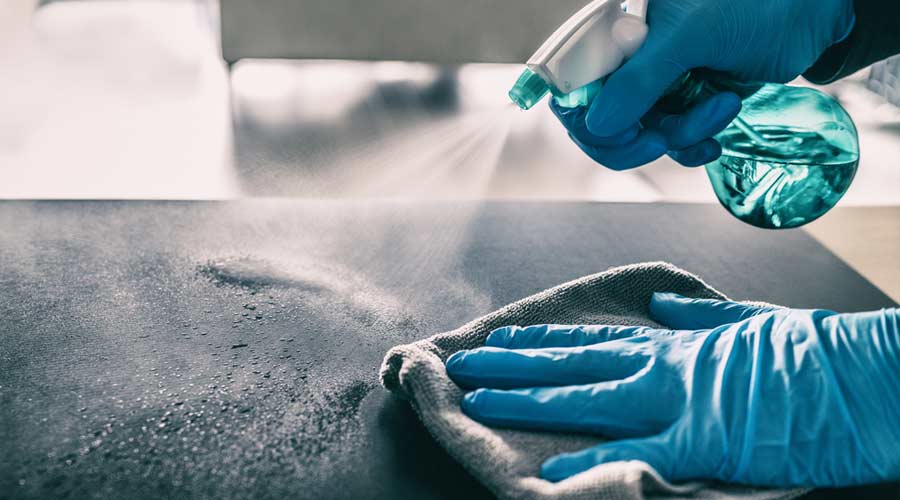
While newly introduced products or practices can have a positive impact on the quality and accuracy of cleaning, they can also have pitfalls. Perhaps no better example of this pertains to surface decontamination. Especially during the pandemic and in healthcare facilities, all of the emphasis was on frequent decontamination and the use of powerful disinfectants for the purpose of eradicating pathogens. The concern however, as infection prevention expert Darrel Hicks explains in a Healthcare Facilities Today piece, is that frontline cleaning crews are under the false impression that pathogens can be eliminated with first removing the organic soil on surfaces in which the pathogens can be sustained.
One practice Hicks feared has been disregarded — or not properly utilized — is the use of detergent based cleaning for healthcare surfaces. The use of detergents, which are less toxic corrosive and overall cheaper than disinfectants. As frontline cleaning crews aim to be more efficient, it’s still pivotal that surfaces are being cleaned the right way to ensure safety. For Hicks, this comes down to reinforcing best practices, including the “clean-then-disinfect” method of surface disinfection.
When it comes to potentially harmful microbes in healthcare facilities, Hicks outlines two distinct qualities: the ability to cause disease, and the ability to last on the surfaces of hospital environments for up to weeks at a time. Equipment that is rarely accessed or touched, such as highly-stationed monitors, power chords or televisions, are prone to accumulating dust-associated microbes leading to the spread of diseases such as Methicillin-resistant Staphylococcus aureus (MRSA). Simply disinfecting these spots won’t eliminate the presence of disease. A surface, Hicks notes, can look harmless, but all it takes is a small trace of decal matter to potential transmit infectious bacteria such as C. diff. Without properly scrubbing the surface beforehand, a disinfectant’s efficacy is hindered or altogether ineffective.
To discourage the idea that “visible cleanliness” is sufficient, Hicks recommends changing the terminology based around surface disinfection. For any process that involves eliminating pathogens from surfaces, the phrase “hygienic cleaning” should be used instead of just simply “cleaning” for cleaning staff, as it emphasizes the importance of soil removal to ensure surfaces are safe for use or contact. He also believes the phrase “clean when visibly soiled” is a negligent mindset, as many surfaces that appear “clean” because no soil is visible can still carry harmful pathogens, such as the aforementioned C.diff from microscopic fecal matter.
For more insight on how pathogens can be better eradicated in healthcare facilities, read the entire article from Hicks here.

 Celebrating BSCAI's 60th Anniversary eBook
Celebrating BSCAI's 60th Anniversary eBook The Down and Dirty on Cleaning in Virus Season
The Down and Dirty on Cleaning in Virus Season How Surfactant Use is Expanding in Commercial Cleaning
How Surfactant Use is Expanding in Commercial Cleaning